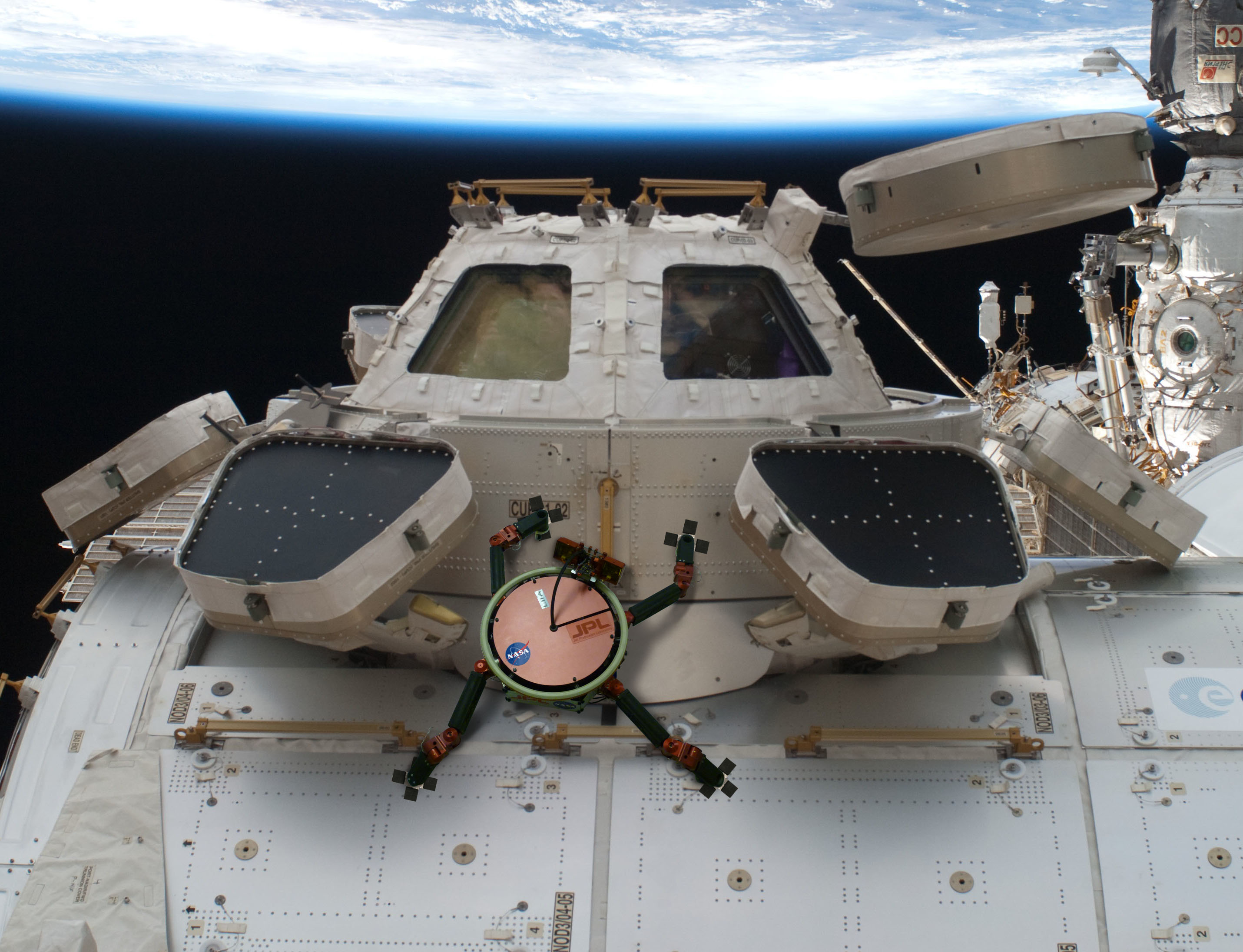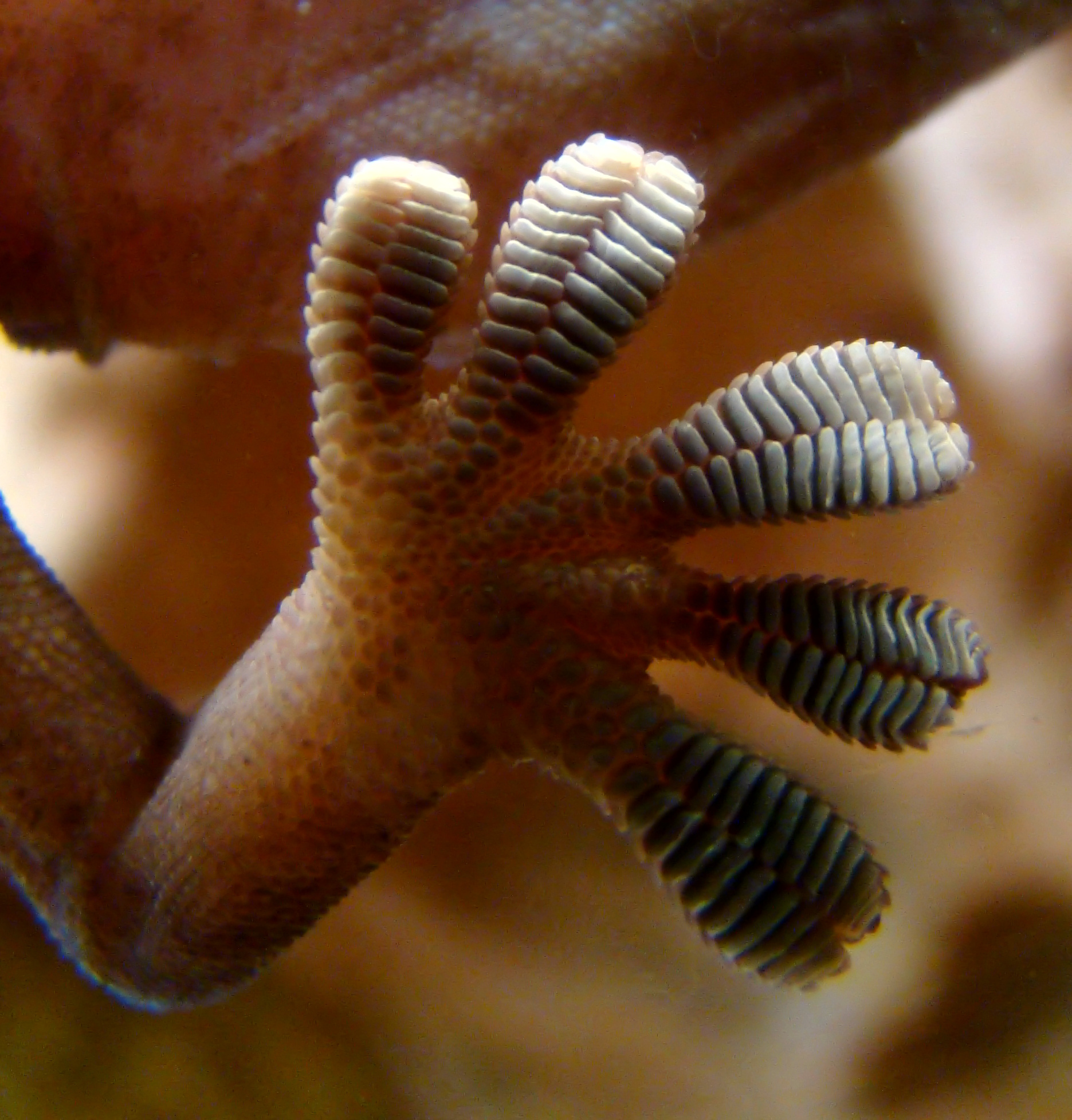
NASA robots may climb the walls of the International Space Station one day using grippers inspired by the super-adhesive feet of geckoes.
Scientists at the space agency's Jet Propulsion Laboratory (JPL) in Pasadena, California, are developing a "gecko gripper" system that could help robots inspect and repair the space station's exterior, and perhaps conduct a wide range of activities in Earth orbit. NASA released a video describing the gecko space robot concept Wednesday (Aug. 12).
"We might eventually grab satellites to repair them, service them, and we also could grab space garbage and try to clear it out of the way," JPL engineer Aaron Parness said in a statement.
Gecko feet aren't sticky in the same way that tape is. Rather, the lizards rely on millions of tiny hairlike protrusions that become powerfully adhesive when bent due to a phenomenon called van der Waals forces.
Because the electrons orbiting a molecule's nucleus aren't evenly spaced, even a neutral (uncharged) molecule has a positive side and a negative side. The positive side of one molecule attracts the negative side of neighboring molecules, and vice versa, generating the "stickiness" that allows geckoes to scuttle up walls and across ceilings with ease.

The lizards can turn this adhesive force on by pushing their feet down and bending the tiny "hairs," Parness said.
"This is how the gecko does it, by weighting its feet," he said.
Breaking space news, the latest updates on rocket launches, skywatching events and more!
The JPL team's gecko gripper works in pretty much the same way. Parness and his colleagues created a material studded with synthetic hairs, each of them much smaller than a human hair. When this material is pushed against a surface, it adheres.

The latest generation of grippers can support more than 150 Newtons of force, which is the equivalent of 35 lbs. (16 kilograms), researchers said.
The gripping system doesn't lose its stickiness over time the way tape does, researchers added, and it should work well in all environments — even those featuring extreme temperatures, pressures and/or radiation conditions.
Parness and the team have already started testing out the gecko gripper in the microgravity environment, using the technology to grab and manipulate objects during parabolic airplane flights.
The researchers have also affixed gecko-gripper feet to a climbing robot called Lemur 3, which can clamber over simulated solar panels and other spacecraft parts as a result.
Follow Mike Wall on Twitter @michaeldwall and Google+. Follow us @Spacedotcom, Facebook or Google+. Originally published on Space.com.
Join our Space Forums to keep talking space on the latest missions, night sky and more! And if you have a news tip, correction or comment, let us know at: community@space.com.

Michael Wall is a Senior Space Writer with Space.com and joined the team in 2010. He primarily covers exoplanets, spaceflight and military space, but has been known to dabble in the space art beat. His book about the search for alien life, "Out There," was published on Nov. 13, 2018. Before becoming a science writer, Michael worked as a herpetologist and wildlife biologist. He has a Ph.D. in evolutionary biology from the University of Sydney, Australia, a bachelor's degree from the University of Arizona, and a graduate certificate in science writing from the University of California, Santa Cruz. To find out what his latest project is, you can follow Michael on Twitter.
